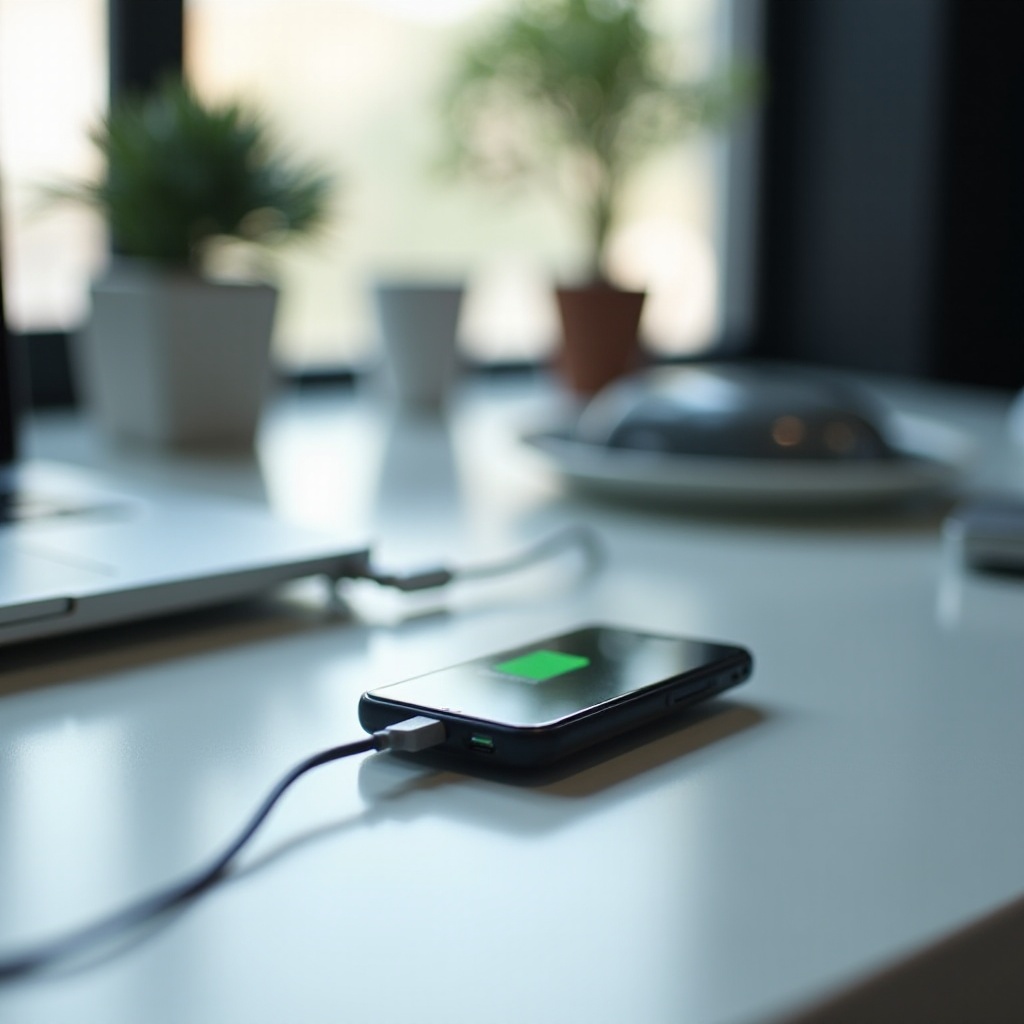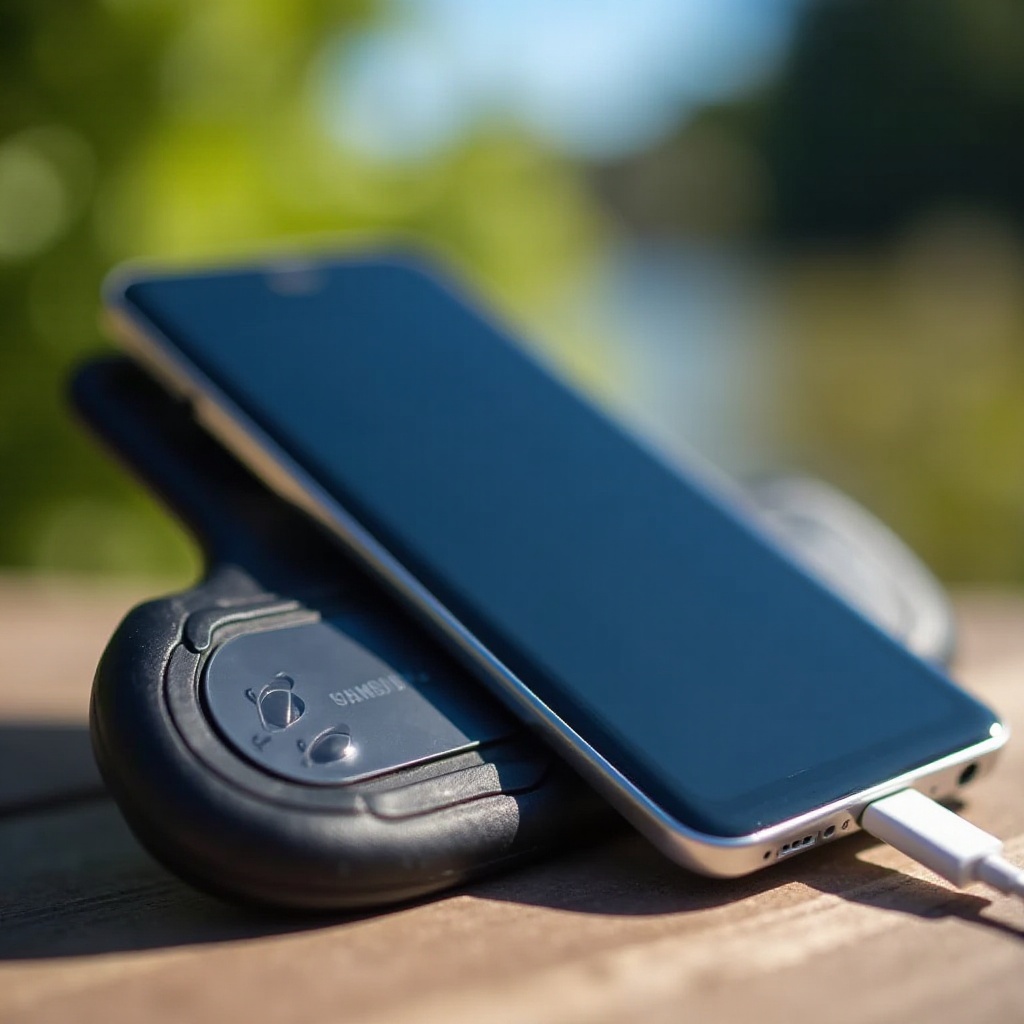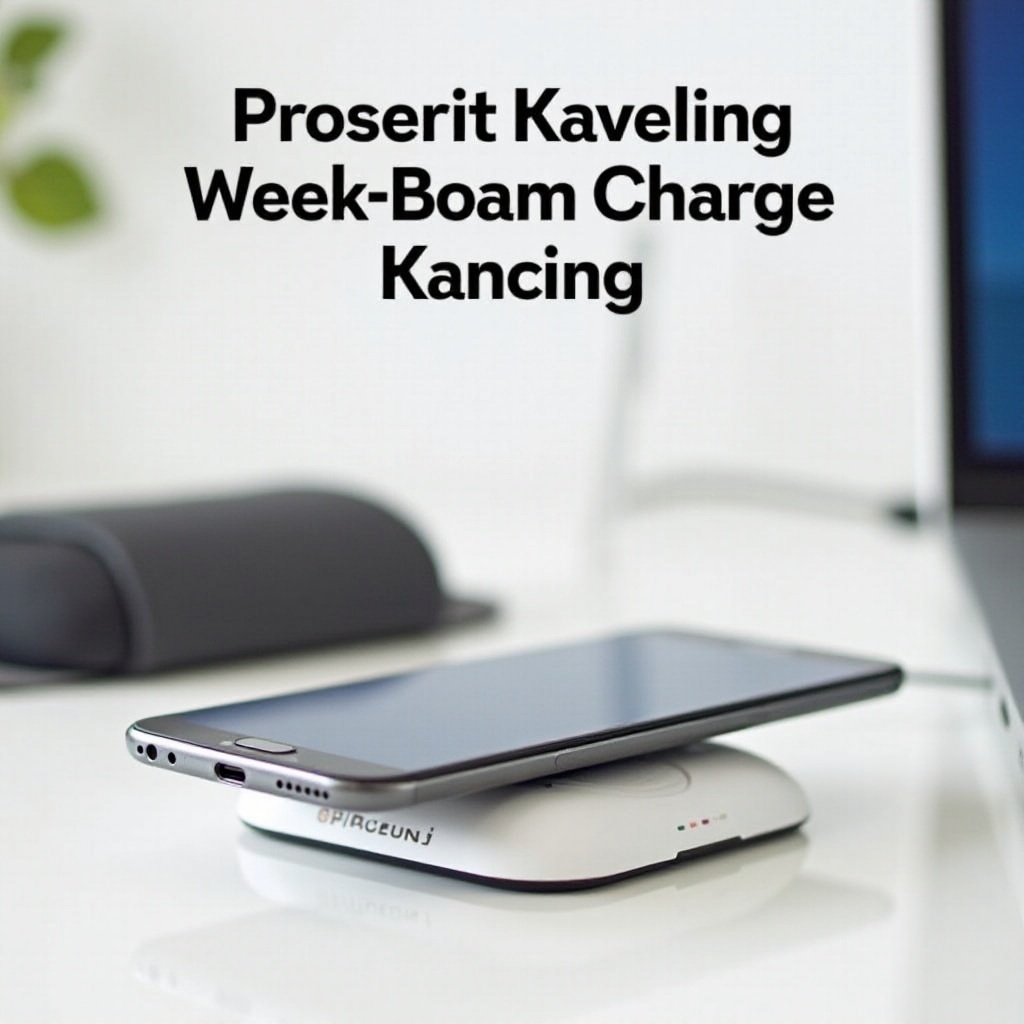Introduction
Running out of battery with no charger in sight can be frustrating. Fortunately, there are several innovative ways to keep your Samsung phone powered up without a traditional charger. This guide will explore various methods, including wireless charging, USB ports, solar power, and handy emergency solutions.

Using Wireless Charging
Wireless charging has become increasingly popular due to its convenience. It allows you to charge your phone without plugging it into a cable. Here’s everything you need to know about using wireless charging for your Samsung phone.
Understanding Wireless Charging
Wireless charging works by transferring energy from the charger to a receiver in the phone’s back through electromagnetic induction. Simply place your Samsung phone on a wireless charging pad, and it starts charging.
Samsung Wireless Charging Compatibility
Not all Samsung phones support wireless charging. Check your phone’s manual or the manufacturer’s website to confirm that your device supports this feature. Models like the Samsung Galaxy S21, S20, and Note series are typically compatible with wireless chargers.
Setting Up a Wireless Charger
- Choose a Compatible Wireless Charger: Ensure the wireless charger is Qi-certified for the best compatibility with your Samsung phone.
- Connect the Charger: Plug the wireless charger into a power source.
- Place Your Phone on the Pad: Align your phone with the charging pad. A notification will appear, indicating that charging has begun.
Wireless charging eliminates the need for cables, making it a hassle-free solution.
Charging via USB Ports
When a wireless charger isn’t available, USB ports can serve as an alternative charging source.
Using a Computer USB Port
Connect your Samsung phone to a computer’s USB port with your phone’s charging cable. Here’s how:
- Turn On Your Computer: Ensure the computer is powered on.
- Connect the USB Cable: Attach one end of the USB cable to your phone and the other to the computer’s USB port.
- Check the Connection: Your phone should display a notification that it is charging.
Charging in a Car via USB
Modern cars come equipped with USB ports that can charge devices. Here’s how to make use of them:
- Find the Car’s USB Port: Typically located on the dashboard or the center console.
- Connect the USB Cable: Attach your phone’s USB cable to the car’s USB port.
- Start the Car: Turn on the ignition to ensure the USB port is powered.
Other Household USB Sources
Household devices like smart TVs, gaming consoles, or external monitors often have USB ports. Use these as charging sources in a pinch by connecting your phone to an available USB port.
USB charging is an excellent alternative in many settings, providing flexibility and convenience.
Solar Charging Solutions
Harnessing solar power is an eco-friendly and efficient way to charge your phone, especially while on outdoor adventures.
How Solar Chargers Work
Solar chargers convert sunlight into electrical energy. These portable devices come with solar panels that absorb sunlight and convert it into battery power.
Top Solar Chargers for Samsung Phones
- Anker PowerPort Solar: Lightweight and highly efficient with multiple panels.
- BigBlue 28W Solar Charger: Features high conversion efficiency and USB ports.
- Goal Zero Nomad 7 Plus: Durable, weather-resistant, and ideal for outdoor use.
Steps to Charge Using Solar Panels
- Open the Solar Charger: Place it under direct sunlight.
- Connect Your Phone: Use a USB cable to connect your Samsung phone to the charger.
- Monitor the Charge: Ensure the solar panels remain in sunlight for optimal charging.
Solar charging is particularly useful during outdoor activities, offering a renewable energy source.

Emergency Charging Methods
In emergencies, having alternative charging methods can be crucial. Here are some reliable options to consider.
Using Power Banks
Power banks are portable battery packs that store electrical energy for later use. Here’s how to use them:
- Charge the Power Bank: Connect it to a power source until fully charged.
- Connect Your Phone: Use a USB cable to connect your phone to the power bank.
- Turn on the Power Bank: Start charging by pressing the power bank’s button.
Hand-Crank and Portable Options
Hand-crank chargers and portable generators can provide power in extreme emergencies.
- Hand-Crank Chargers: Turn the crank to generate electricity manually.
- Portable Generators: Small and battery-operated, these can charge phones by generating electrical power.
Battery Packs and DIY Emergency Solutions
- AA Battery Packs: Connect AA batteries in a portable pack designed to charge phones.
- DIY Methods: Use 9V batteries and adapter cables to create makeshift chargers.
Having multiple emergency charging methods ensures you’re prepared for unexpected situations.
Safety Considerations
Using alternative charging methods requires attention to safety to avoid damaging your phone.
Avoiding Overcharge and Overheat
Avoid leaving your phone connected to any charger for extended periods, as this can cause overheating or overcharging. Always monitor the charging process.
Ensuring Compatibility
Use chargers and cables compatible with your Samsung phone to prevent potential damage. Verify the outputs match your phone’s requirements.

Conclusion
Finding yourself without a charger doesn’t mean you have to remain disconnected. Using wireless chargers, USB ports, solar power, and emergency devices can keep your Samsung phone powered up. These methods are easy to use and can be life-savers in various situations. Investing in some of these alternatives ensures you're always prepared, no matter the circumstances.
Frequently Asked Questions
Can I use any wireless charger with my Samsung phone?
Not all wireless chargers are compatible with Samsung phones. Ensure the charger is Qi-certified for best results.
How long does it take to charge using a solar charger?
Charging time depends on the solar charger’s efficiency and sunlight exposure. It typically takes several hours to fully charge a phone.
Are power banks safe for my phone’s battery?
Yes, power banks are safe as long as they match your phone’s voltage and current requirements. Always choose high-quality, reputable brands.
